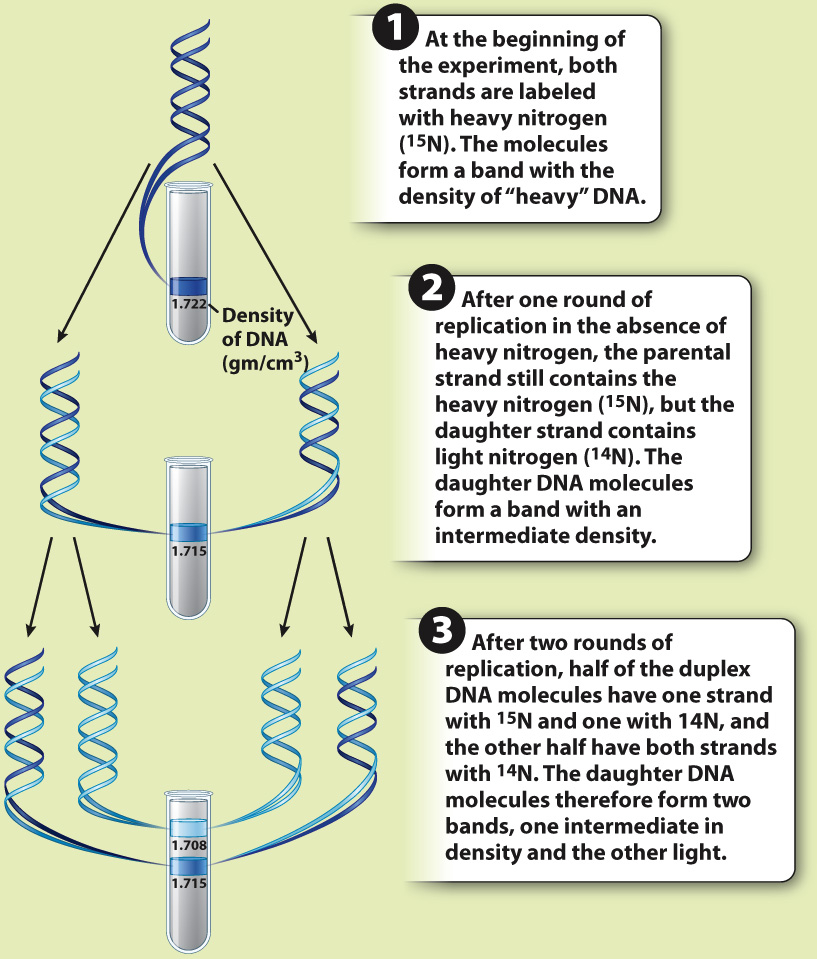HOW DO WE KNOW?
FIG. 12.2
How is DNA replicated?
BACKGROUND Watson and Crick’s discovery of the structure of DNA in 1953 suggested a mechanism by which DNA is replicated. Experimental evidence came from research by American molecular biologists Matthew Meselson and Franklin Stahl in 1958.
HYPOTHESIS DNA replicates in a semiconservative manner, meaning that each new DNA molecule consists of one parental strand and one newly synthesized strand.
ALTERNATIVE HYPOTHESIS DNA replicates in a conservative manner, meaning that one DNA molecule consists of two parental strands, and the other consists of two newly synthesized strands.
METHOD Meselson and Stahl distinguished parental strands (“old”) from newly synthesized strands (“new”) using two isotopes of nitrogen atoms. Old strands were labeled with a heavy form of nitrogen with an extra neutron (15N), and new strands were labeled with the normal, lighter form of nitrogen (14N).
EXPERIMENT The researchers first grew bacterial cells on medium containing only the heavy 15N form of nitrogen. As the cells grew, 15N was incorporated into the DNA bases, resulting, after several generations, in DNA containing only 15N. They then transferred the cells into medium containing only light 14N nitrogen. After one round of replication in this medium, cell replication was halted. The researchers could not observe the DNA directly, but instead they measured the density of the DNA by spinning it in a high-
PREDICTION If DNA replicates conservatively, half of the DNA in the cells should be composed of two heavy parental strands containing15N, and half should be composed of two light daughter strands containing 14N. If DNA replicates semiconservatively, the daughter DNA molecules should each consist of one heavy strand and one light strand.
RESULTS When the fully15N-

CONCLUSION DNA replicates semiconservatively, supporting the first hypothesis.
SOURCE Meselson, M., and F. W. Stahl. 1958. “The Replication of DNA in Escherichia coli.” PNAS 44:671–